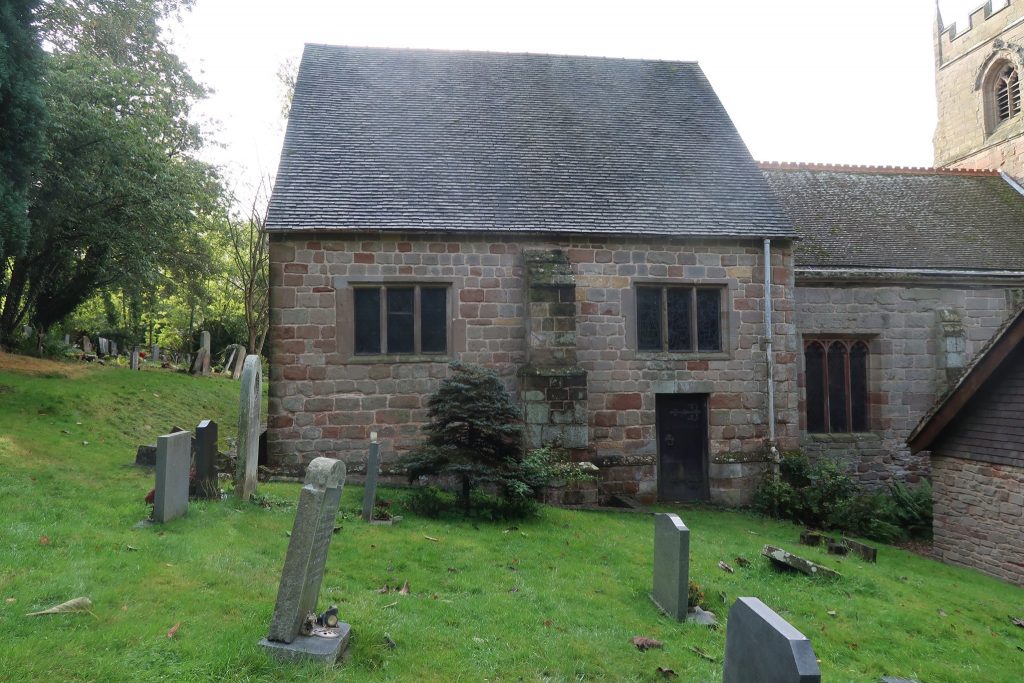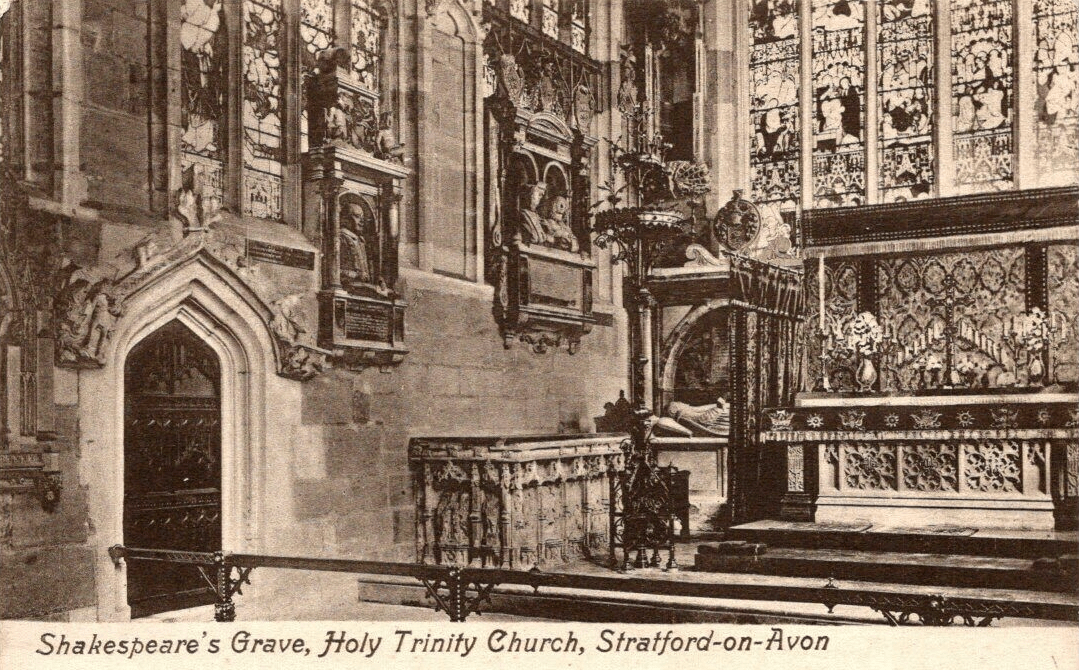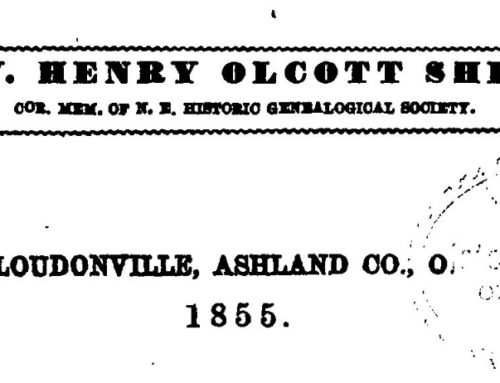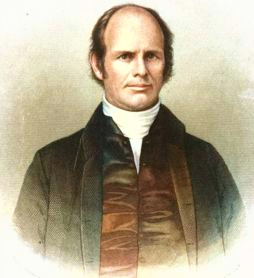In the small country church of St. Leonard’s in Beoley, Staffordshire – various portions of which date back to the 12th, 13th, and 14th centuries – lies a centuries old tale of intrigue. It is an idyllic location, something you may expect to see in a Jane Austen film, and currently has an active and progressive congregation that takes great pride in the care of their house. Attached to the side of this is the Sheldon Chapel, built during the late Elizabethan era by the Sheldon family so that they could continue worship in the Catholic faith while still technically doing so inside a Protestant church. The private stone alter in the chapel is believed to have been a gift to the Sheldon’s by Pope Gregory XIII (papacy 1572-1585). Beneath this chapel is the Sheldon Crypt which contains the remains of at least seven of the Beoley Sheldon’s as well as an additional four unidentified remains. But it also holds a lone skull, which was a point of mystery until recently.
On the 23 of April, 1616, the most prolific and celebrated writer in British history passed away at his home in nearby Stratford-upon-Avon. He had been in “perfect health” when he wrote his Will a month earlier but several years later John Ward, the vicar of the Holy Trinity Church in Stratford where Shakespeare was buried, noted in his journal: “Shakespeare, Drayton, and Ben Jonson had a merry meeting and, it seems, drank too hard, for Shakespeare died of a fever there contracted”. On Shakespeare’s stone slab on the floor at Holy Trinity, which covers his grave, also being below a bust of the bard that looks over the congregation, is the epitaph:
Good frend for Iesvs sake forbeare,
To digg the dvst encloased heare.
Bleste be yͤ man yͭ spares thes stones,
And cvrst be he yͭ moves my bones
This inscription has long given the tomb an aire of Gothic morbid interest. In 1879 the Rev. Charles Jones Langston, vicar of St. Leonard’s, Beoley, published a detailed story called “How Shakespeare’s Skull was Stolen”. This story, which admittedly reads like a penny dreadful, was partially reprinted in The Era (London) on 20 Oct 1883:
The tale is professedly written “by a Warwickshire man,” and the time of the leading event described “about the year 1794.” The writer professes to have had his information from a “Mr. M.,” whose uncle, the hero of the story, was one Frank Chambers; and “now that Mr. M., the only person likely to be affected by the disclosure, has passed away at the age of seventy-five,” he says, “he no longer feels hesitation in transcribing from rough notes and memoranda made and collected by Mr. M., a series of facts which may startle all who, like himself, reverence the very dust of the immortal bard.”
The narrative goes on to described how the youth Frank Chambers, “a wild and rather dashing young fellow” was placed in the employment of a “medical man” in Alcester in about 1787, but “owing to a certain mild escapade” left Alcester for France for several years. He returned in about 1791 due to the first French Revolution where he went back into the employ of the Doctor and went into the medical field himself. It was here, in about 1794 at a party at Ragley Hall, that he met the Rev. Samuel Parr of Hatton and several other local gentry. The conversation at this party turned to the “Stratford Jubilee” – referring to David Garrick’s Jubilee at Stratford, held in 1769, which gave a new rise to popularity of Shakespeare’s works and theater in Stratford, London, and the rest of England. One of the young men of the party, a Squire Moore, spoke up and mentioned that Horace Walpole had offered, after the Jubilee, to give George Selwyn three hundred guineas if he could secure Shakespeare’s head. George Selwyn was a politician known for his fascination with the macabre and was a close friend of Walpole, both members of the socially elite Hellfire Club.
Armed with this juicy bit of information, Frank set out to steal Shakespeare’s skull from the crypt at Holy Trinity Church. Using his standing as a medical professional he convinced a few locals that he just needed a new skull for his collection and had a particular one in mind. His goal was accomplished, but not being able to find a buyer for the skull as he had hoped, he promised that he had returned it back to its original resting place. Whether or not he had actually returned it was highly suspect. A subsequent article by the same Rev. Langston in 1884 continued that the skull had actually been sold to, or somehow otherwise acquired by, the Sheldon family who had original ties with Shakespeare and had also owned one of the famous First Folio’s of Shakespeare’s complete works – known as the Sheldon Folio. Langston also described how, with a churchwarden, they had examined the skull which had been placed in the Sheldon crypt below the chapel.

Sheldon Chapel at St. Leonard’s, Beoley
For over a century this had been where the story ended. It has been repeated and reprinted many times over the decades, sometimes mentioned in Shakespeare’s biographies, sometimes in television fluff pieces, and often described as one of those mysterious bits of history that lends some entertainment.
Then in March of 2014 they received a new vicar at St. Leonard’s, Father Paul Irving. Kelly Wheaton and I had the pleasure of meeting Father Paul for our visit to St. Leonard’s in 2019. He has since, in Feb 2021, left St. Leonard’s. In his Farewell to the congregation he recounted some of his memories of the previous happy years and when he was first asked upon arrival if he had heard about “THE SKULL!”. He hadn’t and “soon wished I hadn’t, as the skull dominated considerable time for the next two years”.
In 2015 the vicar applied to the Church of England’s court for permission to remove the skull temporarily for DNA testing as part of an investigation into the claims that it may belong to Shakespeare. Charles Moyner, lawyer for the diocese, along with several Shakespeare scholars, had understandably dismissed the claim owing to the somewhat fanciful nature of the original accounts. The vicar’s application had been denied. This was not particularly helpful to St. Leonard’s, who had been receiving regular inquiries about the skull for many years. As Richard Clark, rector of Beoley parish, noted at the time, “the problem for us is that the failure to conduct a detailed investigation will result in a higher level of uninformed speculation.”
In order to find some sort of resolution, they had to look for alternative forms of investigation without disturbing any of the remains in the Sheldon chapel. A compromise was reached and permission was granted to allow a forensic team to enter the crypt and scan the skull using laser scanning technology to create a 3D model. The model was then sent for facial reconstruction which determine that it belonged to a woman that was about 70 years of age.
[The original image shared with permission by the Centre of Archaeology, Staffordshire University, created by Face Lab, Liverpool, John Moores University, colorized and animated by Dale Sheldon using MyHeritage portrait enhancement.]
While we can’t be certain of her identity, a strong possibility is that of Philippa Heath (1455-1548), aged 68 upon her death and wife of Ralph Sheldon of Beoley (1452-1546). They were both buried at Beoley church but the Sheldon Chapel was built later, sometime between 1560-1600. It is possible that, in the process of the construction of the chapel and the relocation of their remains, that her skull was displaced.
Interestingly, the story of Shakespeare skull has not stopped here. The situation increased further in March of 2016 when a radar scan of the floor at Holy Trinity Church, Stratford, found “significant localized repair” to the head end of Shakespeare’s grave with “an odd disturbance of soil” around it. According to Kevin Colls, archeological manager at Staffordshire University, that fanciful old story suddenly had some credence and the new data was “very, very, convincing to me that his skull isn’t at Holy Trinity at all”.
New Alternative??
Most have since dismissed the St. Leonard’s portion of the old story, but I offer up a new alternative. It was Langston who claimed his information came directly from the papers of the Mr. M, of which some details have turned out to be true – the missing skull, and the fact that Shakespeare’s grave was much more shallow than otherwise believed, details in the story that had previously been dismissed as nonsense. It was the same Langston who claimed the skull had also been put into the Sheldon crypt, but specifically where in the crypt was never mentioned. Langston stated that he entered the crypt with a churchwarden to view the skull – but this was a century after it had been placed there. It was not touched again for another century when Father Paul Irving opened it in 2015. What if the individual who originally placed the skull, or even Father Langston a century later, swapped out Shakespeare’s skull with a much smaller female already in the tomb, as a way to further conceal the valuable item. Father Paul described the skull as “small and eerie”. Let’s consider for a moment that all of the other remains are accounted for. And if the diagnostic evidence supports the possibility that the skull is a known Sheldon, Philippa Heath, then could Shakespeare still be down there?
The search for Shakespeare’s skull continues.
Further reading/viewing:
- “The Beoley Skull Investigation”: Blog of the Centre of Archaeology, Staffordshire University
- “Shakespeare’s Tomb”: Season 15, Episode 1 of Secret History
- NBC Nightly News report: YouTube video
- Drone footage of St. Leonard’s: YouTube video
- St. Leonard’s Bellringers: YouTube video







Fabulous tale, Dale!